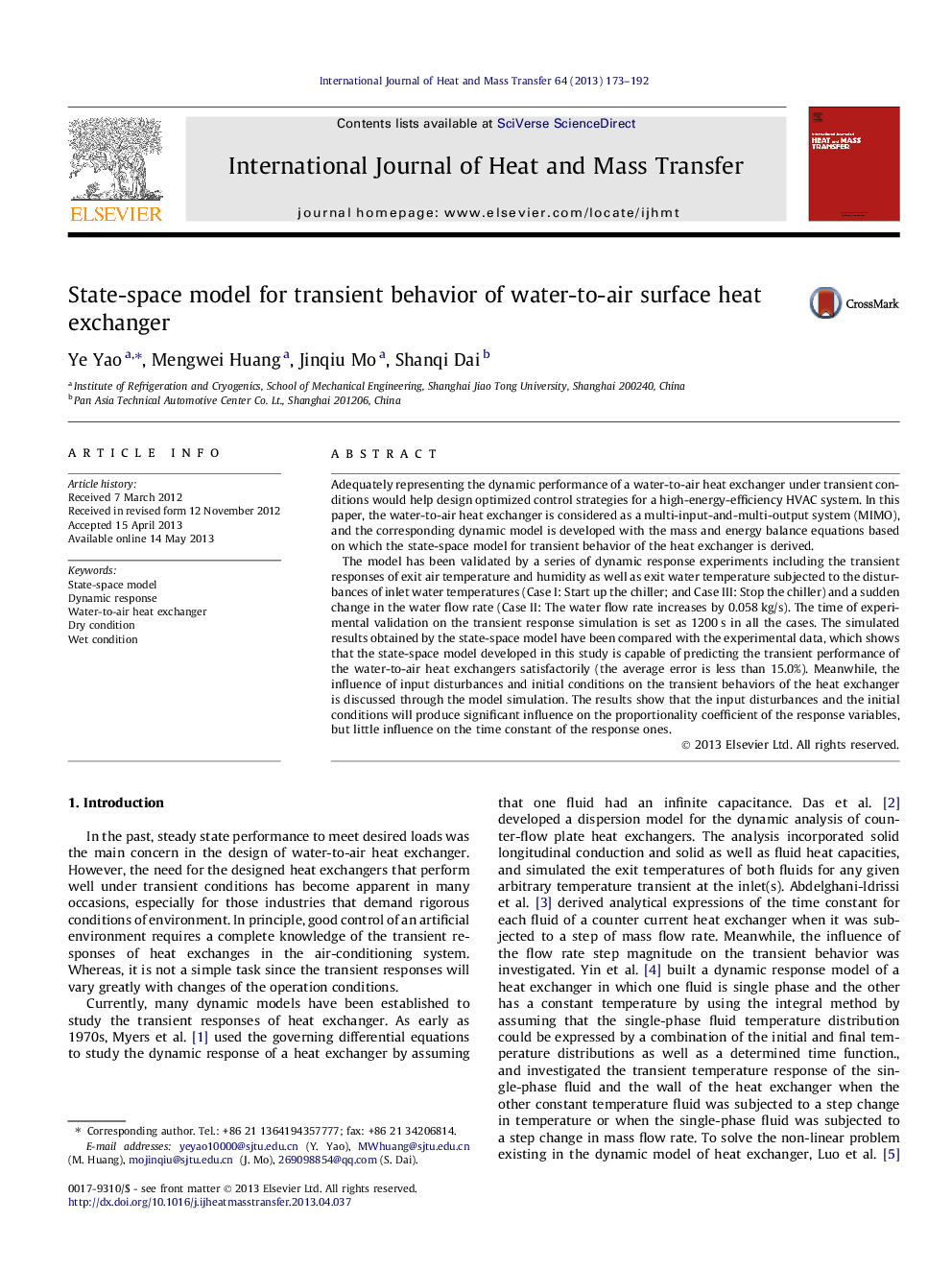| Article ID | Journal | Published Year | Pages | File Type |
|---|---|---|---|---|
| 7058586 | International Journal of Heat and Mass Transfer | 2013 | 20 Pages |
Abstract
The model has been validated by a series of dynamic response experiments including the transient responses of exit air temperature and humidity as well as exit water temperature subjected to the disturbances of inlet water temperatures (Case I: Start up the chiller; and Case III: Stop the chiller) and a sudden change in the water flow rate (Case II: The water flow rate increases by 0.058Â kg/s). The time of experimental validation on the transient response simulation is set as 1200Â s in all the cases. The simulated results obtained by the state-space model have been compared with the experimental data, which shows that the state-space model developed in this study is capable of predicting the transient performance of the water-to-air heat exchangers satisfactorily (the average error is less than 15.0%). Meanwhile, the influence of input disturbances and initial conditions on the transient behaviors of the heat exchanger is discussed through the model simulation. The results show that the input disturbances and the initial conditions will produce significant influence on the proportionality coefficient of the response variables, but little influence on the time constant of the response ones.
Related Topics
Physical Sciences and Engineering
Chemical Engineering
Fluid Flow and Transfer Processes
Authors
Ye Yao, Mengwei Huang, Jinqiu Mo, Shanqi Dai,
